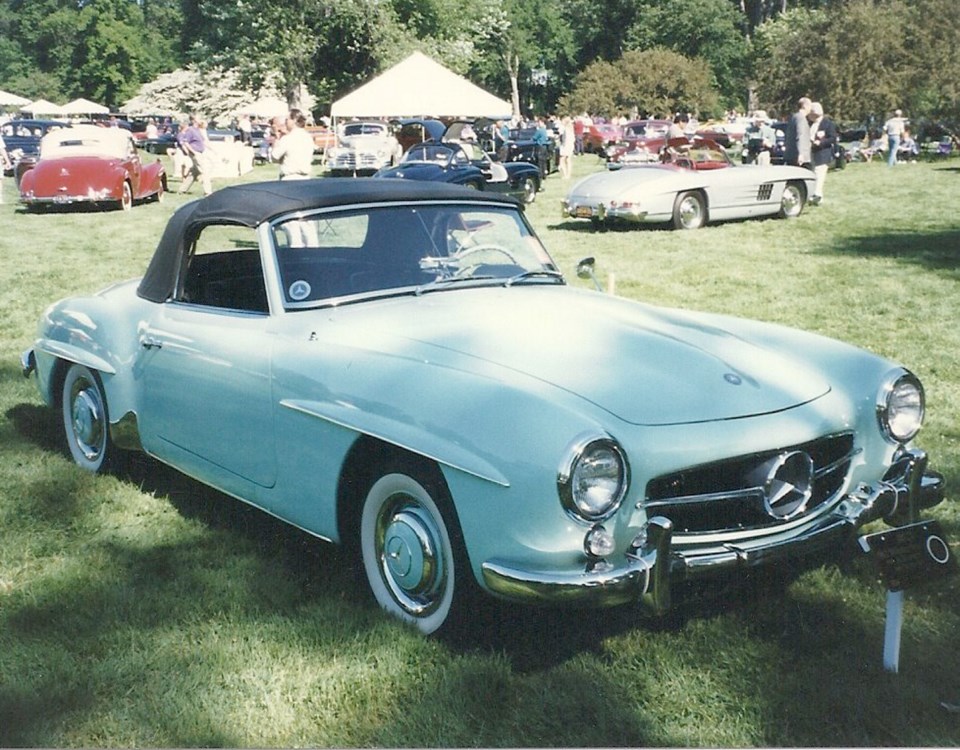The Mercedes-Benz 300SL sports car and little sister 190SL roadster were introduced at the same time. But while more practical for everyday use, the 190SL was overshadowed by its bigger, more glamorous sister. The two had different missions.
The 300SL had everything: a successful racing heritage, including wins at the Le Mans 24-Hours and Mexican Road Race. It had those majestic gullwing doors, stunning performance and even the honour of being the first four-stroke, fuel-injected production gasoline engine.
But the 190SL had its own virtues. It was very attractive in a more demure and understated way, and much more affordable, in the $4,000 to $5,000 range, about half the 300SL’s price. And after the early infatuation had worn off, it would be much less costly to maintain, an important consideration.
They were further evidence of the remarkable recovery after the heavy damage inflicted on Daimler-Benz plants during the Second World War. In less than 10 years, it established a full line of new cars, from small sedans to the large, limousine-like 300, and introduced its 300SL and 190SL.
It re-entered Grand Prix racing with results so triumphant they were reminiscent of the almost invincible racing M-Bs of the 1930s. M-B won the world Formula One championship in 1954 and ’55, and then retired.
The 300SL and 190SL were brought to market at the insistence of New York Mercedes distributor Austrian-born Max Hoffman, a post-Second War imported-car entrepreneur who sold everything from Volkswagens to Jaguars. He understood the American market very well, and his judgment would be vindicated with Mercedes sports cars.
The 190SL and 300SL bowed at the New York Auto Show in February 1954, the first Mercedes to make their premières in the United States. It indicated the growing importance of the North American market to the German company.
While the 300SL was an out-and-out, race-bred high-performance sports car, the 190SL was intended for relaxed and enjoyable touring, not for racing.
The 190SL entered production in 1955 on a shortened version of the Mercedes 180 sedan platform, strengthened to compensate for the open body. Front suspension was A-arms and coil springs, while the rear had the Mercedes trailing arms with high-pivot swing axle and coil springs. A horizontal “compensating” spring above the differential reduced camber change, and Road and Track’s testers found its swing axles held on very well even in bumpy corners.
It was a very attractive two-seater (plus an optional transverse seat in the back) convertible with wind-up windows. It would be supplemented later by an optional removable hardtop and fixed hardtop coupe.
The 190 borrowed a lot of styling cues from the 300SL, including the wide grille with large three-pointed star, general rounded body shape and “eyebrows” above the wheels.
Because it had a normal platform, unlike the 300’s multi-tube space frame that dictated gullwing doors, the 190 had conventionally hinged doors that were more practical, if not as glamorous.
Under the hood was a single chain-driven overhead-cam 1.9-litre (115.8 cu in.) inline four-cylinder engine rated at 120 horsepower at 5,700 rpm. More than one horsepower per cubic inch of displacement was excellent output in those days.
It didn’t get the 300SL’s fuel injection, instead breathing through twin Solex carburetors. Power reached the rear wheels via a manual floor-shift, four-speed all-synchromesh transmission.
Road & Track called the 190SL’s performance “very good for a 2-litre car of this weight” (1,134 kilograms). The 190 accelerated from zero to 100 km/h in 13.0 seconds and reached a top speed of 160 km/h. It was hardly the “Super Light” that its name suggested, so the 1.9-litre engine had its work cut out for it.
The 190SL was built until 1963, and remained remarkably unchanged over its nine-year life span. In spite of some mechanical refinements, performance was hardly altered; top speed rose a bit and acceleration fell due to a slight increase in weight. In Road & Track’s second 190SL test in December 1960, it recorded zero to 100 km/h in 13.5 seconds and a top speed of 171 km/h.
By the time the last one rolled off the assembly line, a total of 25,881 190SLs had been produced, compared with about 3,200 300SL coupes and roadsters combined.
In spite of living in the shadow of its big sister, the 190SL, unlike the 300SL, made money for Daimler-Benz. For those who wanted a sporty car it made the Mercedes mystique, if still not cheap, at least more affordable.
The 190SLs were bought and enjoyed by many enthusiasts for what they were, comfortable, reliable and beautiful cars that combined Mercedes prestige and quality with a great deal of driving pleasure. And it all came without the cost and mechanical complexity of a 300SL.



